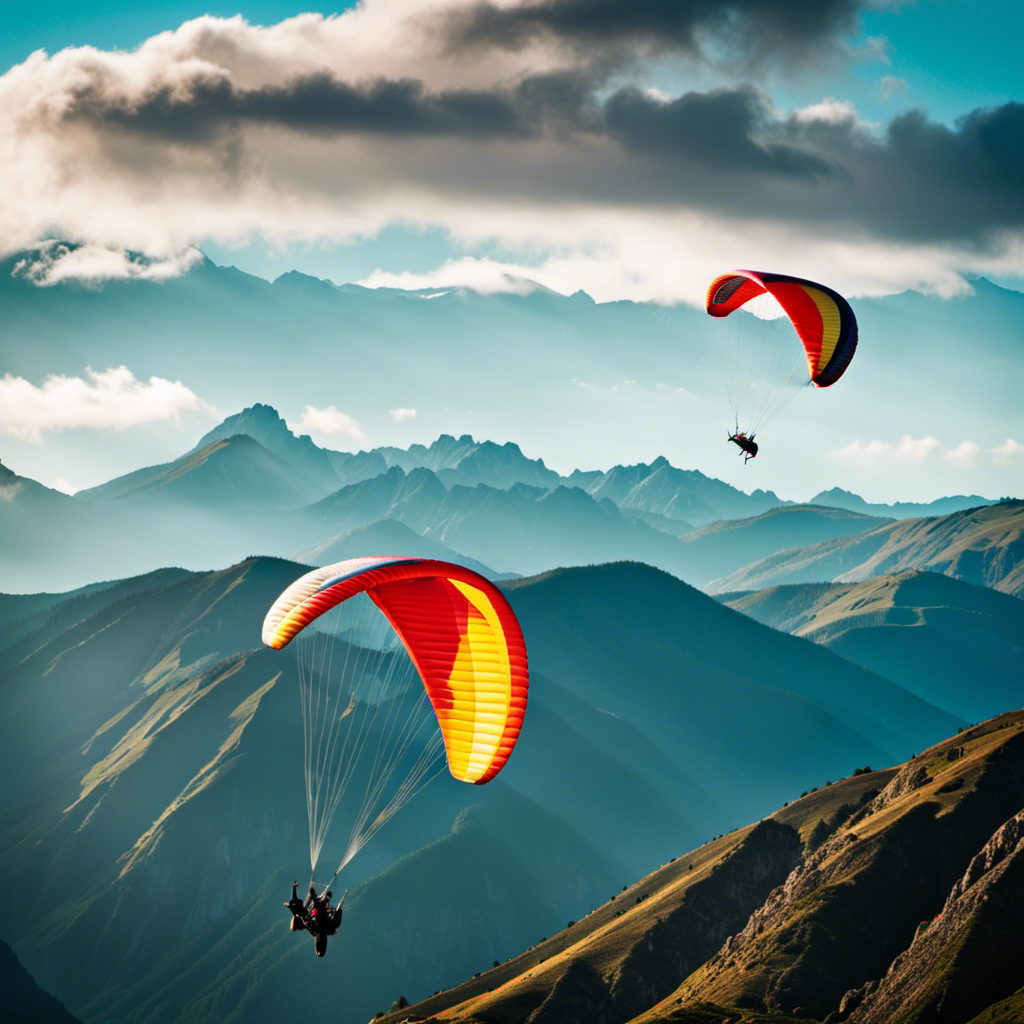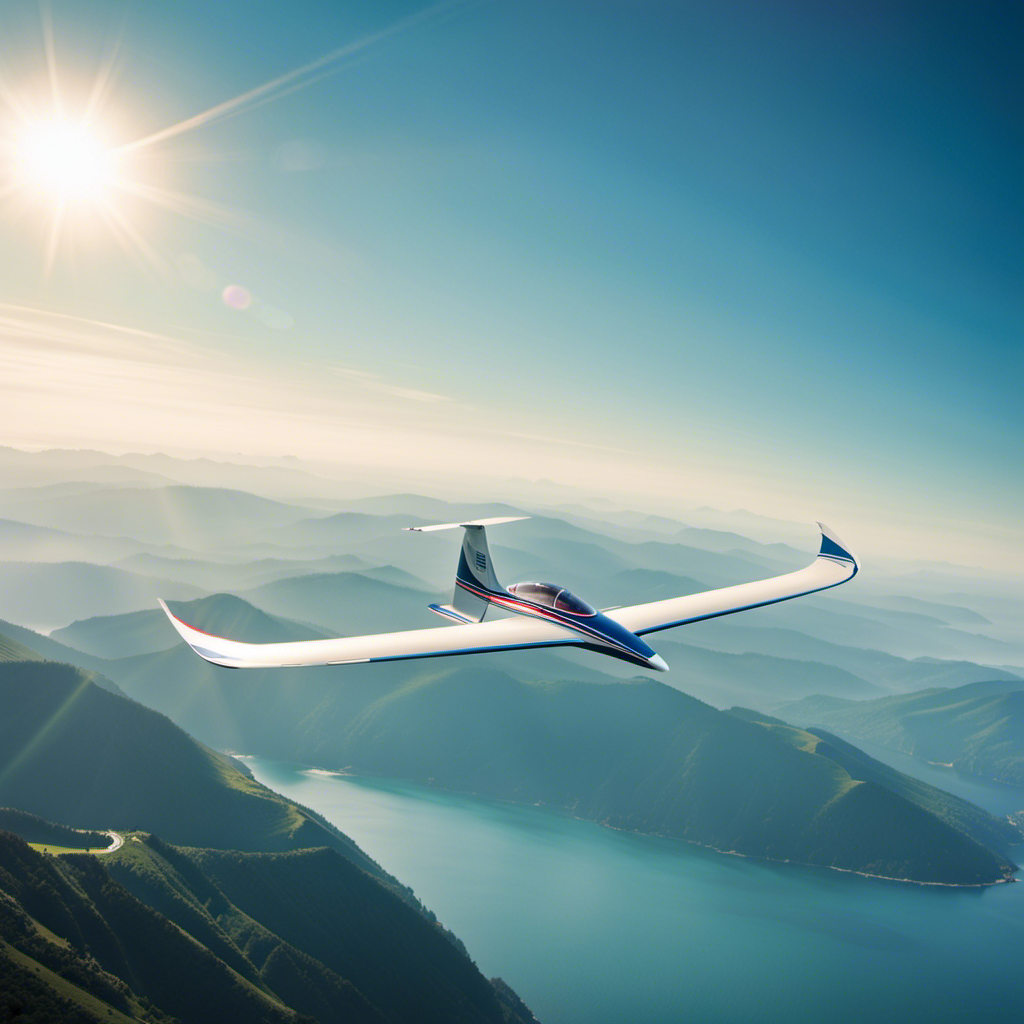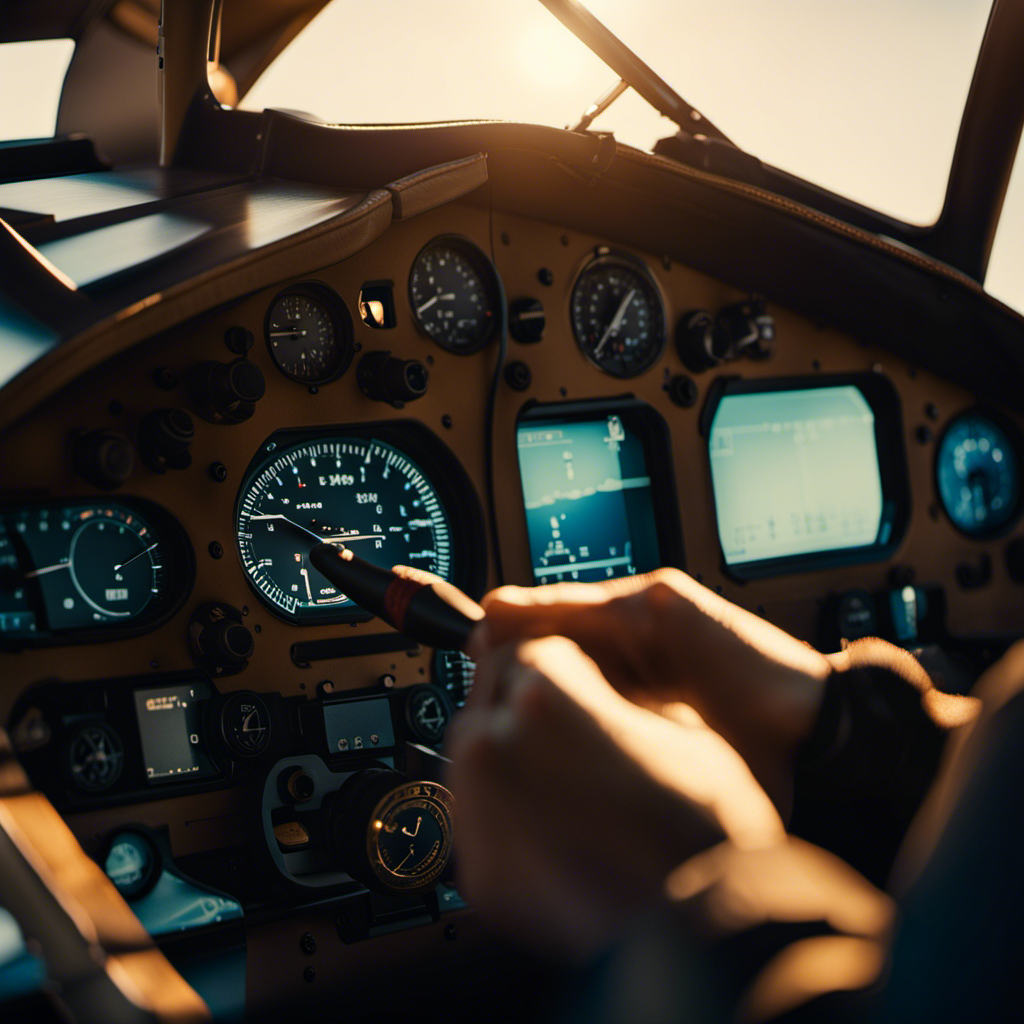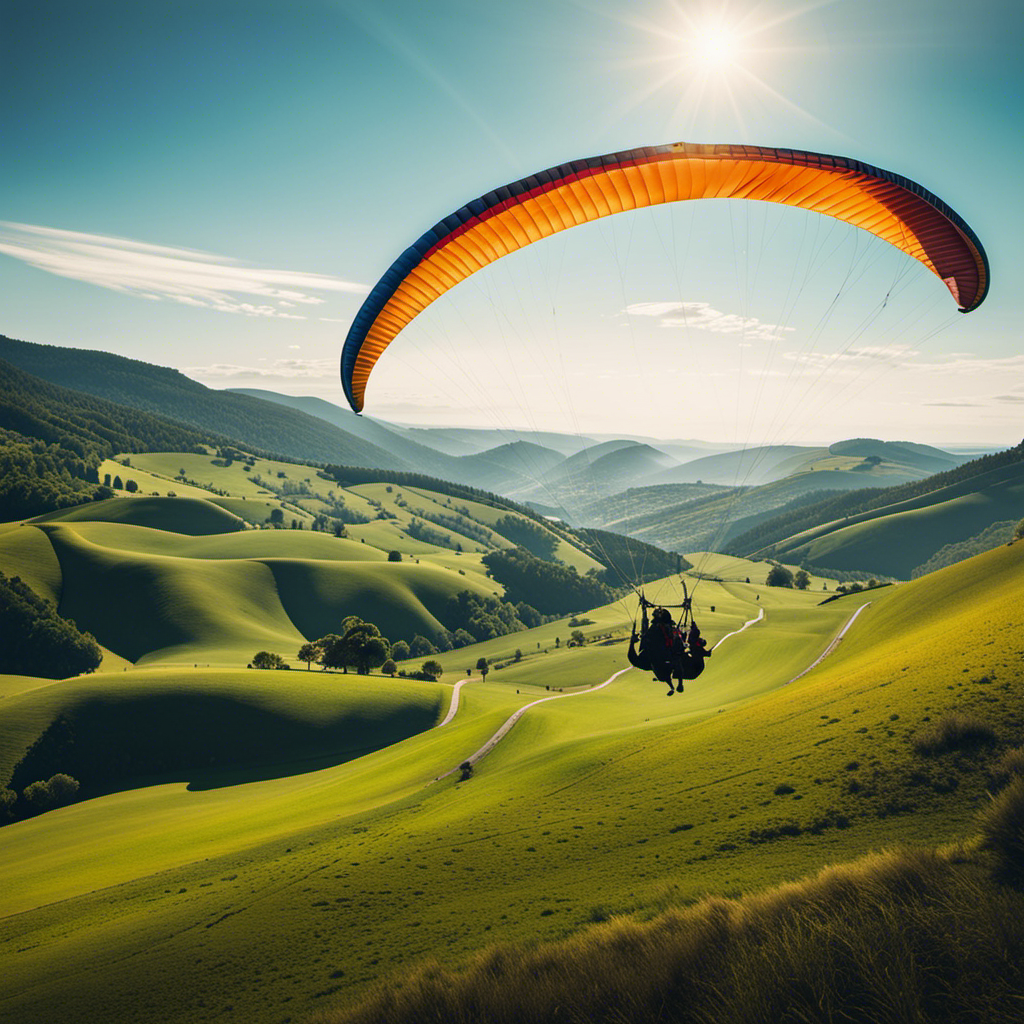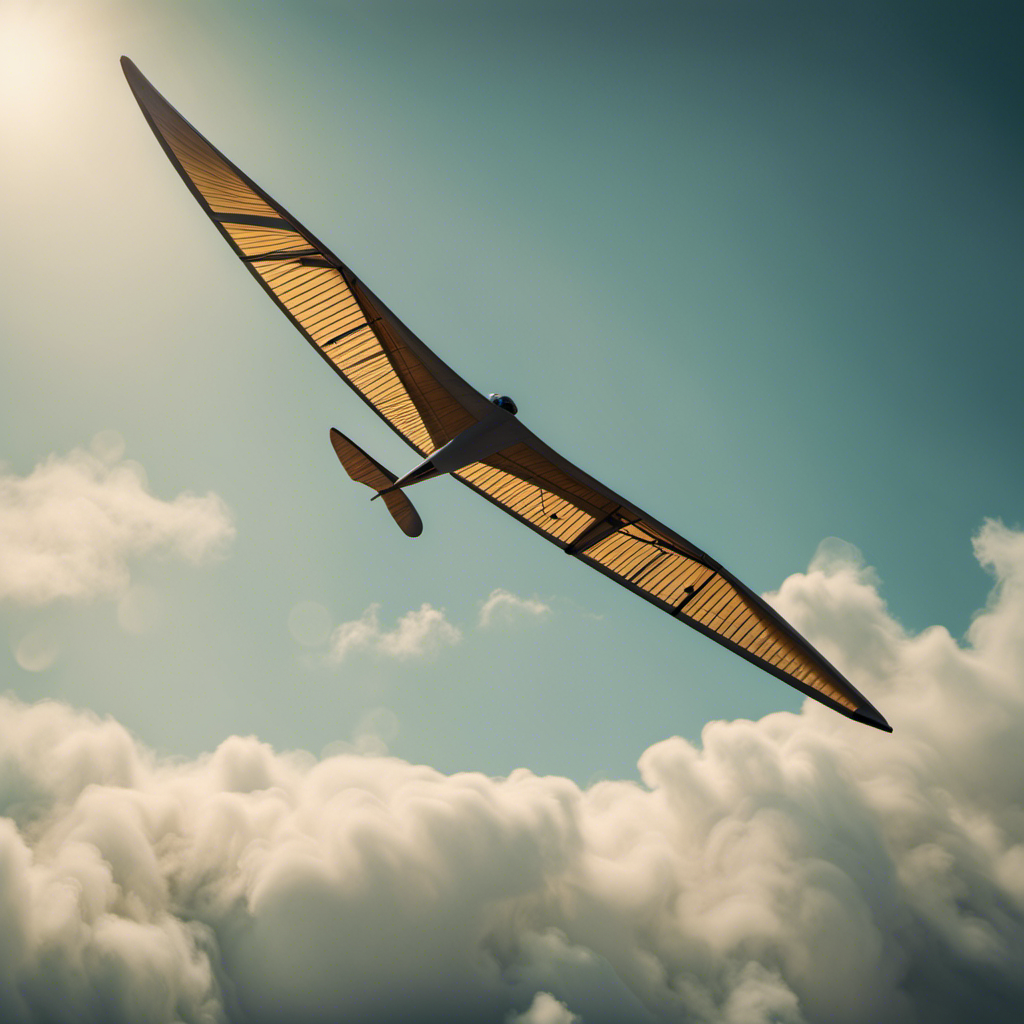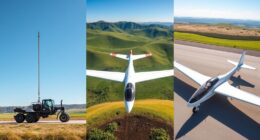I have always been fascinated by the idea of soaring through the air, feeling the wind on my face.
Did you know that paragliding is one of the fastest-growing adventure sports in the world, with over 120,000 certified pilots worldwide?
If you’re considering taking up paragliding, this comprehensive buying guide will provide you with all the necessary information to make an informed decision.
From understanding the different types of paragliders to finding the right size and researching brands, we’ve got you covered.
Let’s dive in!
Key Takeaways
- Prioritize safety and inspect equipment before paragliding
- Use certified safety gear and equipment
- Familiarize yourself with emergency procedures and react appropriately to changes in weather or canopy collapses
- Consider buying paragliding equipment from reputable online stores or local retailers
Types of Paragliders
When it comes to choosing the right paraglider, you’ll want to consider the different types available. Paragliders can be categorized based on the skill level of the pilot and the number of passengers they can carry.
For beginners, there are specific paragliders designed to provide stability and easy handling. These beginner paragliders have a higher level of passive safety features and are ideal for those who are new to the sport.
On the other hand, advanced paragliders are built for experienced pilots who are looking for more speed, maneuverability, and performance.
In terms of passenger capacity, paragliders are available in both solo and tandem options. Solo paragliders are designed for a single pilot, while tandem paragliders can carry two passengers, allowing for shared experiences and adventures.
Understanding the different types of paragliders will help you make an informed decision based on your skill level and intended use. Moving on to the next section, let’s delve into understanding the various features of a paraglider.
Understanding Paraglider Features
To better understand paraglider features, you’ll want to pay close attention to their wing shape and size. The materials used in the construction of a paraglider can greatly affect its performance and durability. Common materials include ripstop nylon for the canopy and high-strength lines for the suspension system.
The wing design is crucial as it determines the stability, maneuverability, and glide performance of the paraglider. Different wing shapes, such as elliptical, semi-elliptical, and rectangular, offer varying levels of performance and handling characteristics.
The size of the paraglider is determined by its surface area and wing loading. A larger paraglider provides more lift and stability, while a smaller one offers greater maneuverability. Finding the right size paraglider for your weight and skill level is essential for a safe and enjoyable flying experience.
Finding the Right Size
When it comes to finding the right size paraglider, there are three key factors to consider: weight range, wing loading, and pilot skill level.
The weight range refers to the minimum and maximum weight that a paraglider can safely handle.
Wing loading, on the other hand, is the amount of weight per square meter of wing area and affects the performance and handling of the glider.
Lastly, pilot skill level plays a crucial role in determining the appropriate size as beginners may require more forgiving and stable gliders while advanced pilots can handle higher-performance models.
Weight Range
The weight range of a paraglider is crucial for ensuring a safe and optimal flying experience. Paragliders are designed to accommodate a specific weight range, and it is important to choose a wing that matches your weight.
The weight range is determined by factors such as the wing aspect ratio, which is the ratio of the wingspan to the average chord length. A higher aspect ratio generally means better performance but also requires more skill to handle.
It is essential to select a paraglider that falls within your weight range to ensure proper wing loading. Wing loading refers to the amount of weight the wing supports per unit of surface area.
This affects the glider’s stability and maneuverability, so it is crucial to find the right balance.
Wing Loading
Finding the right balance between weight and wing loading is crucial for ensuring stability and maneuverability while paragliding. Wing loading refers to the amount of weight that is supported by the surface area of the wing. It is determined by dividing the total weight of the pilot and equipment by the wing area.
A higher wing loading means a greater amount of weight per unit of wing area, which can affect the performance and safety of the paraglider. Too high of a wing loading can result in a faster flying speed, reduced wing stability, and increased risk of collapse in turbulent conditions. On the other hand, too low of a wing loading can lead to sluggish handling and decreased maneuverability.
Therefore, it is important to carefully consider wing loading when selecting a paraglider to ensure optimal paraglider safety and wing design.
Moving on to pilot skill level, the next aspect to consider is…
Pilot Skill Level
Pilot skill level plays a significant role in determining the appropriate wing loading for safe and effective paragliding. Here are three key factors to consider:
-
Pilot Experience: The more experienced a pilot is, the higher their skill level and ability to handle higher wing loadings. Experienced pilots have a better understanding of the dynamics of paragliding and can handle the increased performance and speed that comes with higher wing loadings.
-
Training Requirements: It is important for pilots to undergo proper training and certification before attempting to fly with higher wing loadings. Training programs teach pilots the necessary skills and techniques to handle different wing loadings safely. These programs also emphasize the importance of understanding the limitations of different wing loadings and how they affect flight characteristics.
-
Safety First: Safety should always be a top priority when determining the appropriate wing loading. Pilots must be honest with themselves about their skill level and not push beyond their capabilities. It is crucial to choose a wing loading that allows for safe and controlled flight, rather than aiming for maximum performance without considering the pilot’s experience and training.
Considering these factors will help pilots choose the appropriate wing loading based on their skill level and ensure a safe and enjoyable paragliding experience.
Now, let’s move on to the next section, where we will explore the importance of researching different brands and models to find the right paraglider for you.
Researching Brands and Models
When researching paraglider brands and models, it’s important to consider factors such as price, reviews, and features.
There are many brands and models available in the market, each offering different benefits and features. To start my research, I compared prices of different brands to find the one that fits my budget.
I also took the time to read reviews from experienced paragliders to get an idea of the performance and durability of each model.
Additionally, I looked into the features offered by each brand, such as the wing design, weight, and safety features.
By thoroughly researching and comparing brands and models, I was able to narrow down my options and make an informed decision.
Now, let’s move on to setting a budget for my paragliding adventure.
Setting a Budget
To start setting a budget for my paragliding adventure, it’s important to consider factors such as equipment costs, training fees, and ongoing maintenance expenses. When it comes to equipment costs, it’s crucial to decide whether to buy new or used gear. Buying second hand can be a cost-effective option, but it’s important to thoroughly inspect the equipment for any signs of wear or damage. To help you understand the potential costs involved, take a look at the table below:
| Expense | Average Cost |
|---|---|
| Paraglider | $2,000 – $7,000 |
| Harness | $500 – $1,500 |
| Reserve Parachute | $500 – $1,000 |
Safety Considerations
It’s crucial to prioritize safety and thoroughly inspect all equipment before embarking on a paragliding adventure. When it comes to paragliding, safety should always be the top priority. To ensure a safe and enjoyable experience, proper safety gear is essential.
This includes a certified helmet, harness, reserve parachute, and appropriate clothing. Before each flight, it’s important to carefully inspect all equipment, checking for any signs of wear or damage. Additionally, familiarizing yourself with emergency procedures is crucial. Knowing how to react in emergency situations such as canopy collapses or sudden changes in weather conditions can make all the difference.
Now that we’ve covered safety considerations, let’s move on to where you can buy the necessary equipment for your paragliding journey.
Where to Buy
You can find a wide selection of equipment for your paragliding adventure at reputable online stores and specialized sports shops in your area. Here are a few options to consider:
-
Online options: Many online stores offer a vast range of paragliding equipment, from wings and harnesses to helmets and instruments. They often provide detailed product descriptions, customer reviews, and competitive prices. Some popular online retailers include Paragliding.com, Flybubble, and Paraglider Loft.
-
Local retailers: Visiting a specialized sports shop in your area can be beneficial as you can try on equipment, get personalized advice, and support local businesses. These stores usually have knowledgeable staff who can guide you through the buying process. Look for shops that carry reputable brands like Ozone, Gin, and Nova.
By exploring online options and local retailers, you’ll have access to a wide variety of equipment, ensuring you find the right gear for your paragliding adventure.
In the next section, we will discuss additional equipment and accessories that can enhance your flying experience.
Additional Equipment and Accessories
Exploring additional equipment and accessories can further enhance your paragliding experience. While a paraglider is the essential equipment for this thrilling activity, there are other items that can improve safety and comfort.
One such piece of additional equipment is a reserve parachute. This is a backup parachute that can be deployed in case of emergencies. Other important accessories include a helmet to protect your head, gloves to provide a better grip, and a harness for better control and stability during flights. Additionally, a variometer is a useful tool that provides information about your altitude and climb rate. This can help you find thermals and increase your flying time.
By investing in these additional equipment and essential accessories, you can make your paragliding experience safer and more enjoyable.
Transitioning into the next section about joining a paragliding community, connecting with fellow paragliders can provide valuable insights and support throughout your journey.
Joining a Paragliding Community
Connecting with fellow paragliders in a community can provide valuable insights and support throughout your paragliding journey. By joining a paragliding community, you can gain access to a wealth of knowledge and experience from seasoned paragliders.
These communities often organize paragliding events and competitions, which are great opportunities to learn from others and improve your skills. Attending these events allows you to witness the techniques and strategies employed by top paragliders, giving you a chance to learn and grow as a pilot.
Additionally, paragliding communities offer a supportive network of like-minded individuals who can provide guidance, advice, and encouragement. By immersing yourself in a paragliding community, you can enhance your overall experience and make lasting connections with fellow enthusiasts.
As you begin preparing for your first flight, these connections can prove invaluable in helping you navigate the exciting world of paragliding.
Preparing for Your First Flight
When preparing for your first flight, there are several key points to consider.
Firstly, finding a suitable launch site is crucial for a safe and enjoyable experience.
Secondly, make sure to attend a thorough safety briefing and conduct pre-flight checks to ensure all equipment is in proper working order.
Lastly, once in the air, take the time to fully immerse yourself in the experience and enjoy the breathtaking views and the exhilaration of paragliding.
Finding a Suitable Launch Site
Finding a suitable launch site can be challenging for paragliders due to factors such as wind direction and obstructions. When looking for a suitable launch site, it is important to consider the weather conditions, as they play a crucial role in determining the safety and success of your flight. Ideally, you want a launch site that offers consistent and predictable wind patterns, with minimal turbulence.
Additionally, it is important to assess the surrounding area for any potential obstructions, such as trees or power lines, which could pose a hazard during takeoff or landing. By carefully evaluating these factors, you can ensure a smooth and enjoyable flight experience.
Now that you have found the perfect launch site, it’s time for the next crucial step: the safety briefing and pre-flight checks.
Safety Briefing and Pre-Flight Checks
Now that you’ve found the perfect launch site, it’s time to go over the safety briefing and do the pre-flight checks. Safety is paramount when it comes to paragliding, so it’s important to take the necessary precautions and ensure that your equipment is properly maintained.
Here are three key safety measures to consider before taking off:
-
Safety briefing: Before you start flying, attend a thorough safety briefing. This will cover important topics such as weather conditions, emergency procedures, and potential hazards in the area. Pay close attention and ask any questions you may have to ensure a safe flight.
-
Equipment maintenance: Regularly inspect and maintain your paragliding equipment. Check for any signs of wear or damage, such as frayed lines or torn fabric. Ensure that your reserve parachute is properly packed and that your harness and helmet are in good condition. It’s also crucial to keep your gear clean and free from dirt or debris that could affect its performance.
-
Pre-flight checks: Before taking off, perform a comprehensive pre-flight check. This includes inspecting your wing for any defects, checking the lines for tangles or twists, and ensuring that your harness is secure. Additionally, check your reserve parachute to make sure it is easily accessible and functioning properly.
Enjoying the Experience
Once you’re in the air, don’t forget to take in the breathtaking views and savor the exhilaration of paragliding. It’s an experience like no other, where you can feel the wind rush through your hair and see the world from a bird’s-eye perspective.
But to truly enjoy the view, it’s important to choose the right weather conditions. Look for days with clear skies, gentle winds, and stable atmospheric conditions. Avoid flying in turbulent or gusty conditions, as it can make the experience less enjoyable and potentially dangerous.
Additionally, keep an eye on the weather forecast and consult with experienced pilots or instructors to ensure you’re flying in optimal conditions. By being mindful of the weather, you can maximize your enjoyment and have a safe and memorable paragliding experience.
Frequently Asked Questions
How long does it take to learn how to paraglide?
It typically takes around 10-15 days to learn how to paraglide. Safety precautions are essential, such as proper training and equipment. The best paragliding locations vary, but some popular ones include Interlaken in Switzerland and Pokhara in Nepal.
What are the weight limits for paragliding?
Weight limits for paragliding are crucial for safety. It’s important to check the manufacturer’s guidelines and follow them strictly. Exceeding weight limits can compromise the glider’s performance and increase the risk of accidents.
Are there any age restrictions for paragliding?
There are generally no age restrictions for paragliding, but it is important to follow paragliding safety guidelines and ensure that the individual meets the equipment and gear requirements for a safe and enjoyable experience.
Can paragliders be used in all weather conditions?
Paragliders can be used in a variety of weather conditions, but safety is crucial. Follow paraglider safety tips and choose the best locations for paragliding based on the weather conditions to ensure a safe and enjoyable experience.
What is the average lifespan of a paraglider?
The average lifespan of a paraglider depends on several factors, including proper maintenance and the level of durability of the glider. Regular inspections and repairs can help extend its lifespan and ensure safe flying conditions.
Conclusion
In conclusion, after thorough research and consideration, I am now equipped with the knowledge needed to make an informed decision on buying a paraglider.
From understanding the different types and features to finding the right size and researching reputable brands, I am confident in my ability to choose the perfect paraglider for my needs.
With a set budget in mind, I know where to look for the best deals and additional equipment.
Joining a paragliding community will provide me with valuable insights and support as I prepare for the exhilarating experience of my first flight.
